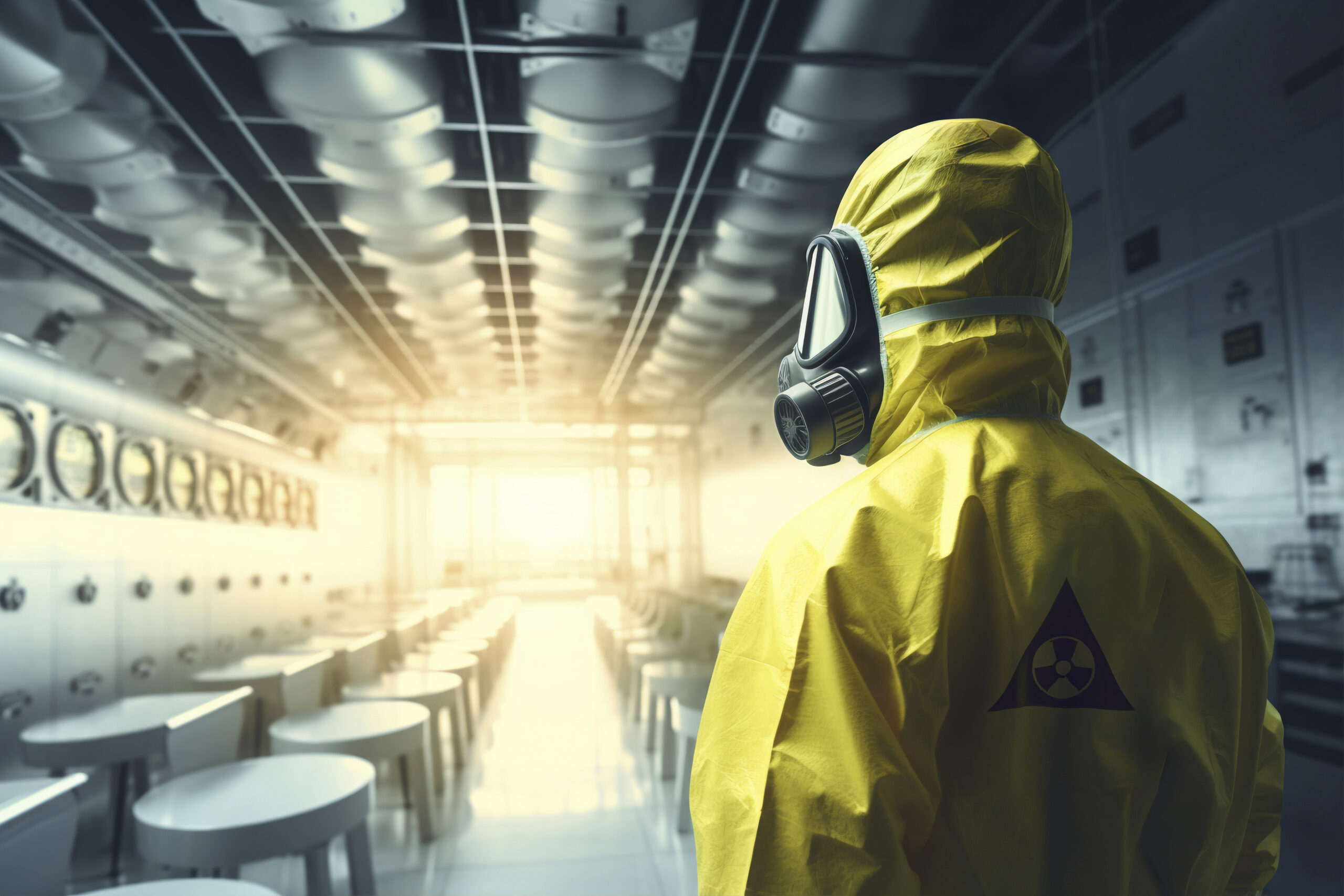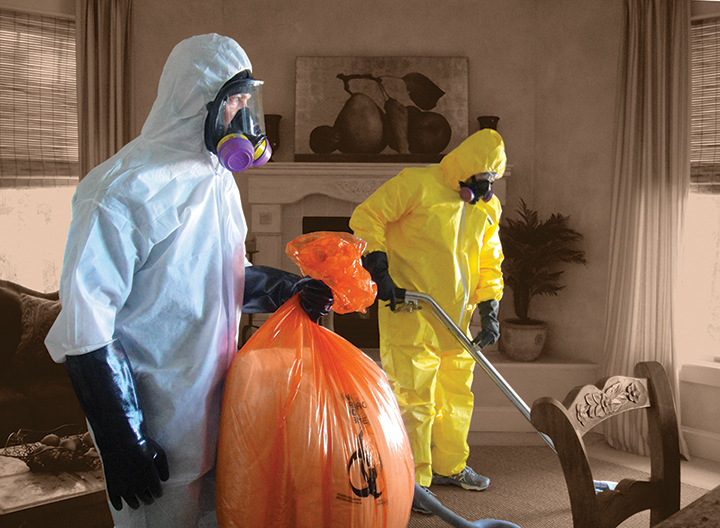Decomposition Death Clean Up: Specialized and Respectful Remediation
Decomposition Death Clean Up: Specialized and Respectful Remediation
Blog Article
Specialist Biohazard Cleansing and Purification for Blood, Bodily Fluids, and Hazardous Products
The possible health and wellness threats connected with direct exposure to biohazards highlight the critical need for meticulous handling and complete cleanup. As we browse the intricate landscape of biohazard clean-up, recognizing the nuances of laws, compliance, and the specific devices at play comes to be crucial in ensuring a risk-free and thorough decontamination procedure.
Wellness Risks of Biohazard Direct Exposure
Direct exposure to biohazards positions significant health risks that can cause serious consequences for individuals and communities alike. Biohazards include a vast array of biological substances, consisting of blood, bodily liquids, mold and mildew, microorganisms, viruses, and other potentially contagious materials. When individuals enter into call with these biohazards, whether through accidents, incorrect handling, or ecological direct exposure, they deal with the threat of having serious diseases or diseases.
Among the primary health and wellness threats related to biohazard direct exposure is the transmission of transmittable conditions. Bloodborne virus such as HIV, liver disease B and C, and numerous germs can be present in biohazardous materials, presenting a straight danger to human health and wellness. Inhaling airborne biohazards like mold spores or entering contact with contaminated surfaces can additionally cause breathing problems, allergies, and other adverse health results.
In addition, biohazard direct exposure can have lasting wellness ramifications, with some illness manifesting years after the initial call (Blood Cleanup). Consequently, it is critical to focus on appropriate biohazard cleansing and decontamination to mitigate these health and wellness dangers and guarantee the safety and security of people and areas

Specialized Training for Biohazard Cleaning
When it concerns taking care of biohazard clean-up successfully and safely, specialized training plays a fundamental function in ensuring appropriate purification procedures are complied with. Biohazard cleaning requires certain knowledge and skills to successfully mitigate dangers related to bloodborne pathogens, physical liquids, and hazardous materials. Experts learnt biohazard cleanup go through extensive guideline on how to safely take care of, get rid of, and throw away biohazardous products to stop contamination and exposure.
Specialized training for biohazard clean-up covers an array of essential topics, including appropriate individual safety tools (PPE) use, bloodborne pathogen awareness, decontamination methods, and contaminated materials disposal methods. People educated in biohazard clean-up are geared up with the needed proficiency to evaluate contamination degrees, determine prospective hazards, and apply proper cleaning treatments in conformity with governing criteria.
Continual training and education and learning are extremely important in the area of biohazard cleaning to remain updated on the most up to date purification innovations, security procedures, and policies. By purchasing specialized training, biohazard cleaning specialists can properly reply to emergency cleanup situations and safeguard both public wellness and the setting.
Relevance of Appropriate Decontamination Techniques
Making use of correct decontamination techniques is crucial in biohazard clean-up to successfully get rid of hazardous products and reduce wellness dangers. Effective decontamination not just guarantees the elimination of noticeable traces of blood, bodily fluids, and various other biohazards but additionally targets unnoticeable pathogens that might pose major health and wellness risks otherwise correctly eradicated. By complying with stringent purification protocols, educated professionals can substantially minimize the risk of direct exposure to dangerous bacteria, infections, and germs that can result in infections or conditions.
Appropriate purification techniques involve using specialized devices and anti-bacterials that are specifically created to counteract biohazards efficiently. Thorough cleaning and sanitation of infected locations are vital to stop the spread of virus and guarantee a risk-free setting for occupants. Furthermore, the right disposal of biohazardous waste adhering to decontamination procedures is important in protecting against contamination of other surfaces or people.

Tools and Devices for Safe Cleaning
The correct devices and websites tools play a vital duty in making sure the effective and safe cleaning of biohazardous products. When taking care of blood, bodily fluids, or unsafe products, biohazard cleansing specialists depend on specialized gear to minimize direct exposure dangers and thoroughly sanitize the damaged area. Personal safety devices (PPE) such as gloves, masks, coveralls, and safety glasses are important to protect versus direct call with potentially infectious products. Furthermore, biohazard cleansing sets consisting of disinfectants, absorbing materials, and biohazard bags are used to securely dispose and have of polluted items. Blood Cleanup.
Advanced cleansing devices like hospital-grade anti-bacterials, HEPA-filtered vacuum cleaners, and fogging equipments are utilized to sanitize surface areas and eliminate biohazards successfully. Specialized tools such as sharps containers and biohazard waste disposal containers are made use of to safely handle sharp things and biohazardous waste materials. By utilizing the ideal tools and tools, biohazard cleaning experts can make certain an extensive cleanup procedure that focuses on safety and reduces health and wellness threats for both employees and occupants of the afflicted area.
Laws and Conformity in Biohazard Cleansing
Correct adherence to regulations and conformity requirements is critical in biohazard cleaning to make sure the security of both employees and the setting. Federal government firms such as OSHA (Occupational Safety And Security and Health Administration) and the EPA (Epa) have actually developed certain standards for biohazard clean-up treatments to lessen health and wellness dangers and ecological contamination. These guidelines cover a series of elements including the handling, transportation, and disposal of biohazardous materials, as well as the needed training and safety devices required for personnel associated with the cleanup procedure.
Biohazard cleansing firms need to stay up-to-date with these regulations to guarantee that their procedures fulfill the needed security standards. Failing to abide with these guidelines can lead to severe consequences, consisting of penalties, legal activity, and jeopardizing the health and wellness of individuals and the atmosphere. By complying with stringent laws and conformity steps, biohazard cleaning firms can successfully reduce risks and ensure a thorough and secure clean-up process for all events included.
Conclusion
To conclude, biohazard cleaning and purification need specialized training, correct techniques, and adherence to laws. Exposure to blood, physical fluids, and unsafe products presents significant health and wellness risks, making it vital to use the appropriate equipment and devices for safe clean-up. By following stringent methods and guidelines, specialists can effectively mitigate the risks connected with biohazard direct exposure and guarantee the safety and security of both themselves and others.
As we navigate the elaborate landscape of biohazard cleaning, understanding the nuances of guidelines, conformity, and the specialized devices at play comes to be critical in guaranteeing a secure and thorough purification procedure. (Blood Cleanup)
When it comes to dealing with biohazard clean-up effectively and securely, specialized training plays a basic role in guaranteeing appropriate purification procedures are followed.Utilizing appropriate decontamination methods is vital in biohazard cleaning to effectively eliminate blood clean up solution hazardous materials and reduce health and wellness dangers. Furthermore, biohazard cleaning sets consisting of anti-bacterials, absorptive products, and biohazard bags are utilized to blood spill clean up kit safely include and dispose of contaminated products.
Federal government companies such as OSHA (Occupational Security and Health And Wellness Administration) and the EPA (Environmental Protection Firm) have actually developed certain guidelines for biohazard cleanup procedures to decrease wellness threats and environmental contamination.
Report this page